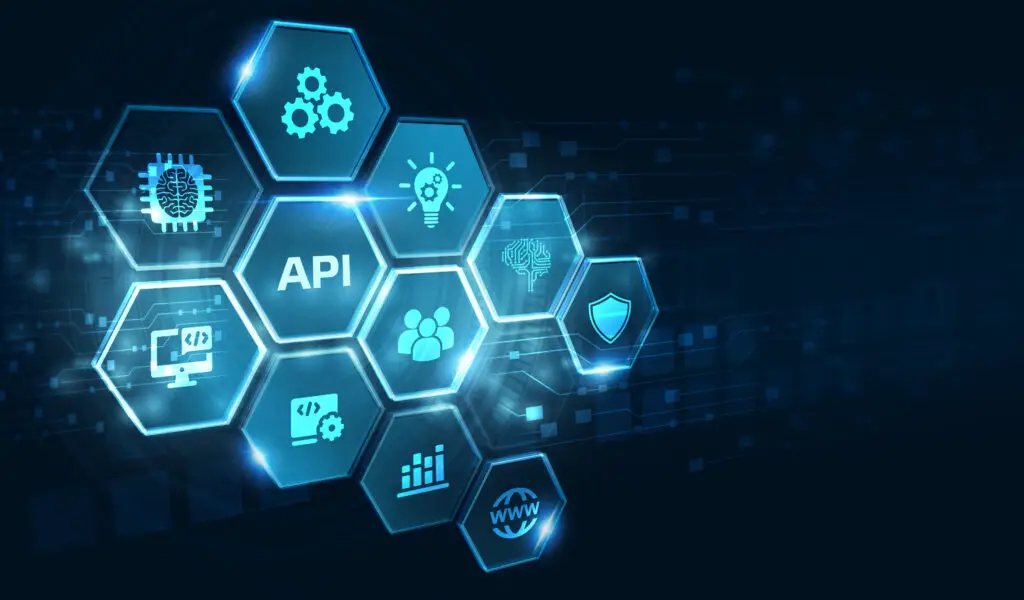Diving into the dynamic world of APIs, or Application Programming Interfaces, opens up a treasure trove of possibilities for your applications. In essence, APIs are like secret tunnels connecting different software applications, enabling them to share data and features with each other. Think of it like ordering a meal at a restaurant. You, the customer, are one application; the kitchen is the other. The waiter, or the API, takes your order to the kitchen and brings the food back to you. By integrating 3rd-party services through APIs, your application can gain new functionalities, like displaying a weather forecast from a weather service or showing a live sports score from a sports site. With APIs, you don’t need to build everything from scratch. Instead, you can stand on the shoulders of giants, leveraging their services to enrich your application.
What are APIs?
If you’re new to web development or programming in general, you must have heard of the term API from time to time. API is an acronym for Application Programming Interface. It’s a set of rules and protocols for building and interacting with software applications. APIs define the methods and data formats that a program should use to communicate with other software or components of the same software.
The menu provides a list of dishes you can order, along with a description of each dish. When you specify what menu items you want, the kitchen (i.e., the system that will prepare your order) does the work and provides you with the finished dishes – you don’t need to know how the kitchen works to get your meal. Similarly, you don’t need to know the details of how the software is handling your request, you just need to know what requests you can make, and the format those requests should be in.
APIs allow different software programs to communicate with each other, sharing data and functionalities, making it possible for software developers to create complex, feature-rich applications.
The Rise of Third Party Services
Third-party APIs are services offered by external providers that can be integrated into your applications. These APIs allow developers to add new features and functionalities without having to build everything themselves. For example, you can use Google Maps’ API to include location services in your app, or PayPal’s API to handle online payments. In a nutshell it has to do with adding an already existing feature to your application via API.
“The Rise of Third-Party APIs” marks a significant evolution in the digital landscape. In the past, companies often had to build every piece of their applications from scratch. This process was time-consuming, expensive, and required a high degree of specialized knowledge. However, with the advent of third-party APIs, businesses can now leverage the expertise of others to enhance their own applications.
The rise of third-party APIs is fueled by the recognition that collaboration, rather than isolation, can lead to more robust, feature-rich applications. Instead of reinventing the wheel, businesses can now focus on their core competencies and use third-party APIs to fill in the gaps. This not only saves time and resources but also opens up opportunities for innovation, as developers are free to experiment with a wide variety of services and create unique combinations that cater to their specific needs. As such, third-party APIs have become a cornerstone of modern application development, driving efficiency, innovation, and inter-connectivity across the digital ecosystem.
Basic Concept of APIs
This can be understood by viewing APIs as a set of rules that dictate how software components should interact. In its most straightforward form, an API is a contract between two pieces of software, stating that if Software A sends a specific request in a particular format, Software B will respond in a specific way.
One of the central concepts of APIs is the “request-response” cycle. The software that uses the API sends a ‘request’, which includes details of what it wants to do. This request is sent to a specific address, or ‘endpoint’. The software that provides the API receives the request, processes it, and sends back a ‘response’, which could be data, a confirmation of an action, or an error message.
Another essential concept is ‘methods’ or ‘verbs’, which define what kind of operations you can request. The most common are GET (retrieve data), POST (send data), PUT (update data), and DELETE (remove data).
APIs can be ‘public’ or ‘private’. Public APIs, also known as ‘open APIs’, are available for anyone to use. Private APIs, on the other hand, are typically intended for use within the company that created them or with selected partners.
Lastly, APIs often return data in a format called JSON (JavaScript Object Notation), which is a standard, easy-to-read format that allows complex data to be easily processed.
By understanding these basic concepts, developers can utilize APIs effectively to extend the functionality of their own applications or to interact with other software in meaningful ways.
Types of APIs
Generally, APIs can be categorized based on usage and how they are accessed. Each type of API is best suited for a specific kind of scenario or need. Understanding the types of APIs is crucial for successful application development. There are 7 main types of APIS
-
-
- Web APIs
- SOAP APIs
- GraphQL APIs
- JSON-RPC and XML-RPC APIs
- WebSockets
- Library-Based APIs and SDKs (Software Development Kits)
- Operating System APIs
-
Web APIs
Web APIs are also known as HTTP APIs or REST APIs, operate over the internet and allow applications to communicate with each other via HTTP requests. They follow the principles of Representational State Transfer (REST) and are often used in web development due to their simplicity and scalability.
SOAP APIs
SOAP means simple object access protocol. They are a standard protocol for web services and stand for Simple Object Access Protocol. Unlike REST APIs, SOAP APIs are not restricted to HTTP and can use other protocols like SMTP (email). They are highly extensible and secure, making them suitable for complex operations and environments with strict security requirements.
GraphQL APIs
These offer a more flexible alternative to REST APIs, allowing clients to request exactly the data they need, reducing the amount of data transferred over the network. GraphQL APIs are becoming increasingly popular for their efficiency and flexibility.
JSON-RPC and XML-RPC APIs
These are relatively simple APIs that allow for remote procedure calls. They encode their data in JSON or XML respectively and can be a good choice for basic needs.
WebSockets
Web-Sockets provide real-time, bidirectional communication between the server and the client, making them perfect for use cases that require instant updates, like chat applications or live sports updates.
Library-Based APIs and SDKs (Software Development Kits)
They are APIs packaged with a set of software tools, libraries, relevant documentation, code samples, processes, and/or guides that allow developers to create software applications on a specific platform or for a specific programming language.
Operating System APIs
OS APIs provide the way for applications to interact with the operating system. They allow developers to utilize OS-level features and manage resources.
Integrating APIs
When integrating APIs, your application sends a request with specific instructions to the API. This could be a request for data retrieval, data modification, or triggering a particular action. The API processes the request and returns the relevant data or a status update. It’s like asking a librarian for a book; you make a request, and the librarian fetches the book for you.
How do APIs Work?
APIs work as intermediaries between different software systems, allowing them to communicate and exchange data. Like a waiter in a restaurant, the API takes your order (the request), brings it to the kitchen (the system), and then delivers the meal (the response) back to you. This enables different software systems to interact and share functionalities without knowing the intricate details of each other’s operation.
Security Concerns and Best Practices
APIs, like any technology, can pose security risks, such as data breaches or unauthorized access. To mitigate these risks, apply best practices like using secure protocols (HTTPS), implementing authentication (like API keys or OAuth), and regularly auditing your APIs for potential vulnerabilities. It’s like keeping your house safe; you use locks and perhaps a security system, and regularly check for potential security risks.
API Management and Monitoring
Managing and monitoring APIs involve tracking the performance, usage, and overall health of your APIs. API management tools can help handle versioning, access control, and analytics, while monitoring solutions can alert you to any issues or anomalies. Think of it as the management of a team; you need to coordinate, track performance, and step in when issues arise.
Future Trends in API Integration
Looking ahead, we see APIs becoming even more critical. With the rise of AI, IoT, and micro-services, the demand for efficient and robust APIs is set to grow. Additionally, as more businesses recognize the value of their data, we may see an increase in APIs that allow for secure, controlled data sharing.
Conclusion
In conclusion, APIs are like the unsung heroes of the digital world, quietly enabling the interconnected experiences we’ve come to rely on. Understanding how they work, how to use them safely, and how to manage them effectively will equip you to make the most of this powerful tool. With APIs, the possibilities are vast, and the future is bright.

